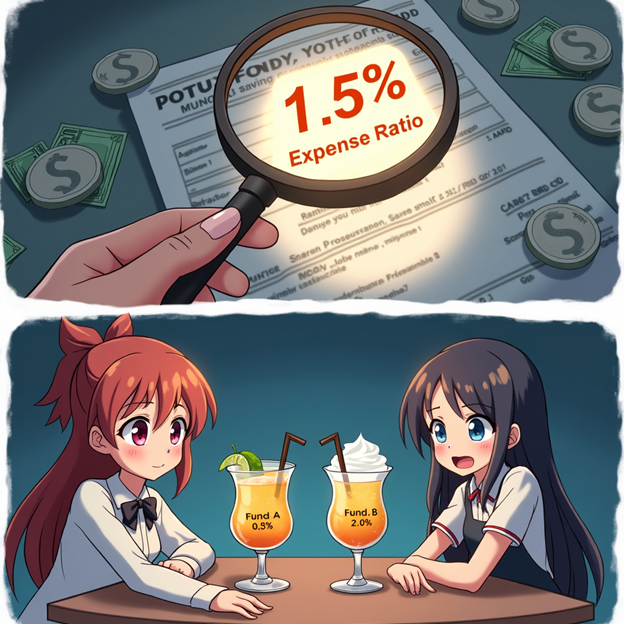There are no items in your cart
Add More
Add More
| Item Details | Price | ||
|---|---|---|---|
A fund's expense ratio looks small but can eat into your long-term returns. Understand what it is, how it works, and how to make cost-efficient investments.
07/06/2025
" If your mutual fund gave 12% but you only received 10.8%, where did the 1.2% go?
Welcome to the Expense Ratio — a silent, ongoing fee you pay for fund management.
This tiny percentage covers fund manager salaries, research, operations, and marketing. But over time, even a 1% difference can mean lakhs in lost returns.

What Is Expense Ratio?
The expense ratio is the annual fee (in % of AUM) charged by the mutual fund to manage your money. For example:
If you invest ₹1 lakh in a fund with a 1.5% expense ratio, you pay ₹1,500 per year.
It’s deducted daily before the NAV is declared — so you never see the deduction directly, but it affects your net returns.
Types of Expense Ratios
Real-Life Example: Arjun vs. Priya Arjun and Priya both invest ₹5 lakh in the same fund in 2020.
Always compare expense ratios, especially for long-term goals like retirement or children's education.
Switch to Direct Plans where possible. Check the expense ratio before investing — it’s one of the most important cost metrics that affects your wealth creation.

Summary Table: Expense Ratio Impact
| Fund Plan | Avg. Expense Ratio | 10 Yr Return @ 12% Gross | Total Corpus (₹5L Invested) | Net Gain Difference |
| Regular Plan | 1.5% – 2.25% | ~10.0% – 10.5% | ₹13.2 – ₹13.9 lakh | Lower |
| Direct Plan | 0.5% – 1.0% | ~11% – 11.5% | ₹14.2 – ₹15.5 lakh | Higher |

Dr. Satish Vadapalli
Research Analyst